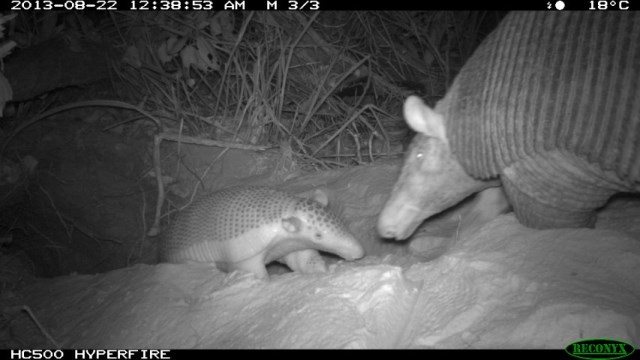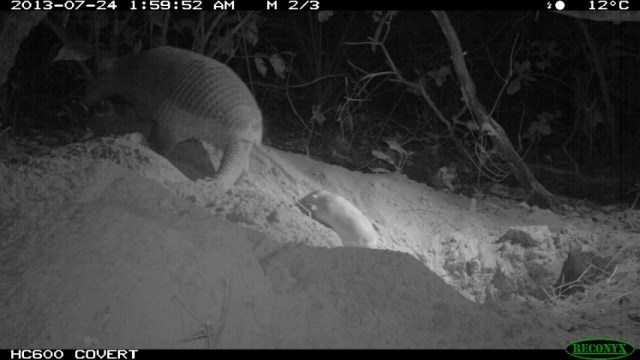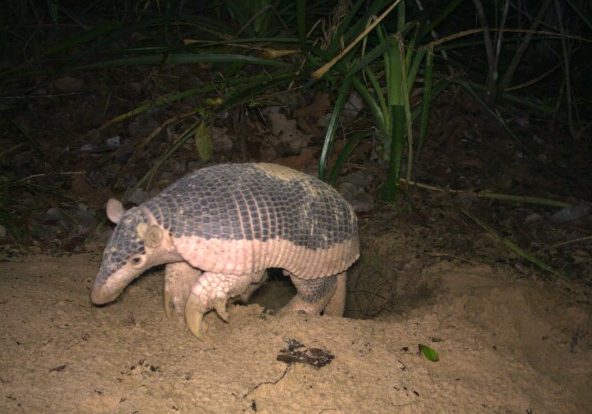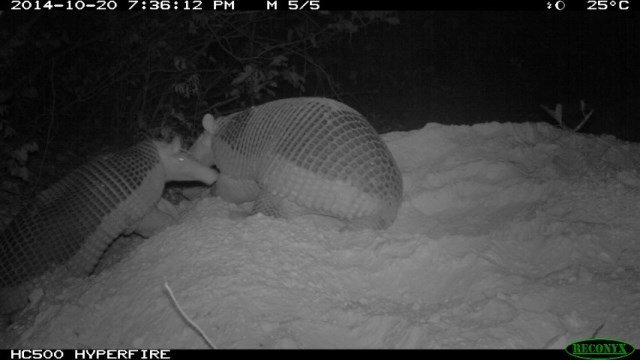Tag: Championing ecological research
The black crowned crane, found in various regions of East and West Africa is of global conservation concern. Both subspecies, the West African Crowned Crane and the Sudan Crowned Crane, have undergone dramatic population declines.
Thought originally to occur in over 27 African countries, the species has now been restricted to roughly eight isolated populations. The West African crowned crane in particular has undergone such drastic population declines that in Nigeria, where the species is still considered the national bird, no more than a few individuals are left of the population that in the 1970s was in excess of 15,000 birds.
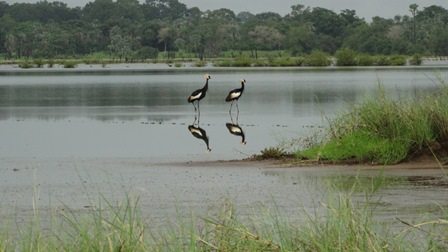
Chester Zoo has a long history of support for the Conservation of Black Crowned Cranes in West Africa project. The project’s main aims are to better understand the species’ habitat usage, distribution, nesting behaviours and instigation of a better future management plan. Along with these investigations, the project also engages local communities and helps to raise awareness of the importance of these beautiful animals.
In 2001, the zoo supported preliminary surveys of the bird in the Casamance (the area of Senegal south of the Gambia including the Casamance River), conducted by Wetlands International.
These surveys estimated 940 birds in the five regions of the Casamance. The 2013 updates indicated that the most serious on-going threat to cranes in this region appears to be continuous changing habitat. In essence, the freshwater wetlands that are such important breeding sites for these birds are increasing in salinity and becoming unsuitable breeding sites. This was not necessarily the case for all other sites surveyed as the project is run in several West African countries simultaneously.
In the Casamance, the bird is greatly respected and highly regarded amongst local people, however, in other regions such as small villages in Guinea-Bissau traditions exist that may be detrimental to the survival of the species; for example if a hunter sees more than one crane, he must kill all or none, or else the other cranes will bring revenge to the village. For this reason, community engagement, education and awareness is just as important as habitat preservation for the survival of these birds.
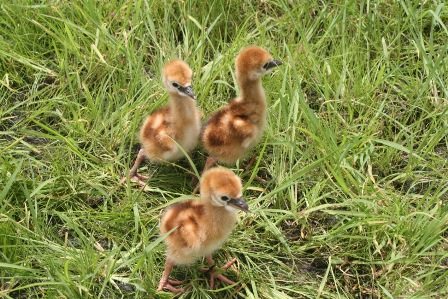
Most recently, there have been reports surfacing from recent monitoring of the species, of population stabilisation and increases in certain areas of West Africa. Chester Zoo continues to provide financial input and support to this important project and we look forward to more good news emerging as the project continues.
The conservation of black crowned cranes in West Africa is an ongoing project, with community education and involvement in the conservation of these animals a major component in the success of the project, something that Chester Zoo also provides support for, along with other partners involved in the project. Stay tuned for further information about this project in blogs to come!
Well, Bermuda, (a small island off the coast of North America), comes pretty close.
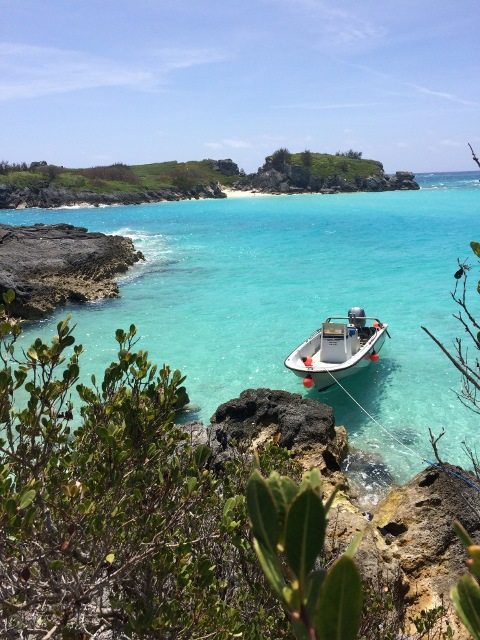
Chester Zoo is lucky enough to be involved in an exciting project monitoring a population of skinks on the island, working closely with the Government of Bermuda’s Department of Conservation Science, who run the project.
The main aim of the project in the field is to get a more comprehensive understanding of population numbers across the whole of the island. At the moment, populations have been monitored in pockets all over the island but in order to understand the status of the Bermuda skinks, we need to know how many there are! One thing is for certain though, this species is in decline so it is even more important to know how many there are and where the healthy populations exist.
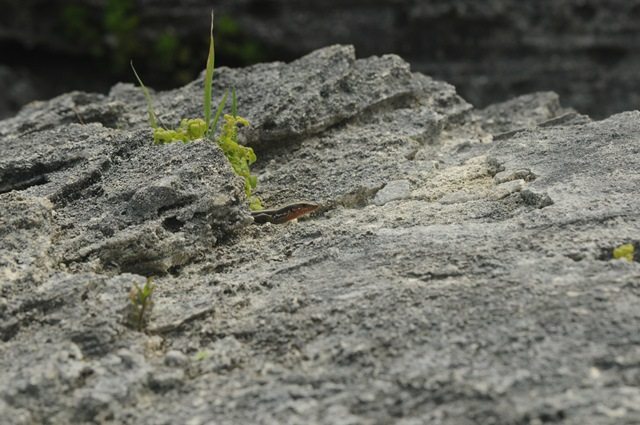
A Bermuda skink basking in the sun
Chester Zoo’s curator of lower vertebrates & invertebrates, Gerardo Garcia, travelled out to Bermuda earlier this year to lend his expertise to the project on marking and sampling techniques for the skink. Helena Tunrer, a student from the University of Kent, together with Dr Mark Outerbridge, from the Department of Conservation Science, is undertaking a capture-mark-recapture census to determine the numbers of skinks all over Bermuda.
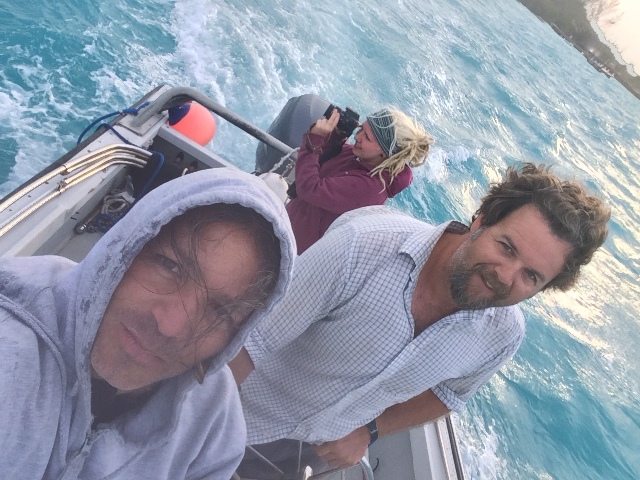
Helena, Mark and Gerardo making their way to one of the field sites
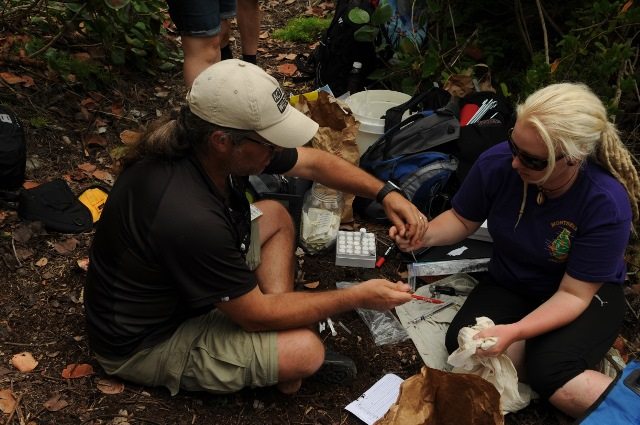
Gerardo and Helena working in the field
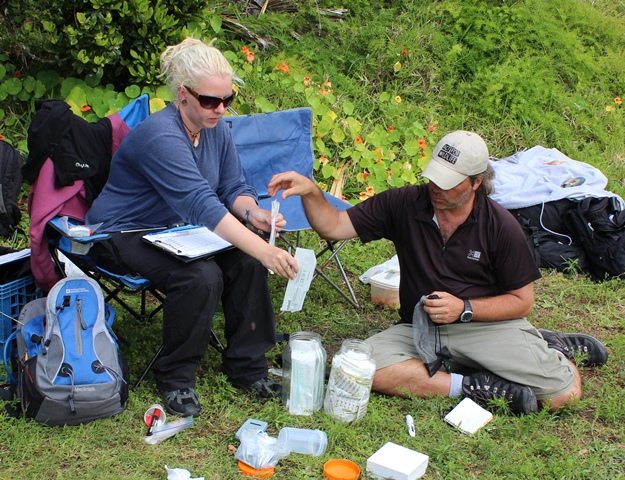
Prior to Gerardo’s visit, the method of marking captured skinks involved using a small paint dot to leave a visible mark on the back of the skinks that were caught in the traps left out for them – large jam jars!
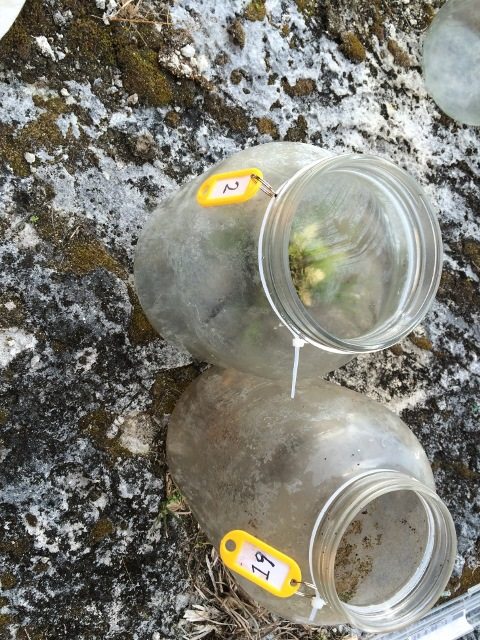
With Gerardo’s help, the team have adapted their marking technique to involve micro-chipping the skinks. This will not only allow the team to tell whether or not the skink has been caught before but will also allow them to distinguish between individuals. This new information means the team can plot movements of individuals, giving a much more detailed picture of the ecology of these critically endangered lizards.
Skink having its microchip read
The population estimation component of the species recovery plan is just the tip of the iceberg. Chester Zoo is also facilitating several other projects. One project being run by Manchester University, led by Prof. Richard Preziosi, will be using genetic material collected by conducting mouth swabs on the skinks to provide information on the genetic diversity of the various populations, while another project being run by Valencia University in Spain, is collecting data on parasites found on the skinks.
These Universities are also working with the Department of Conservation Science and Mark Outerbrige will assist in collecting data from the skinks for these projects for the duration of the skink’s active season.
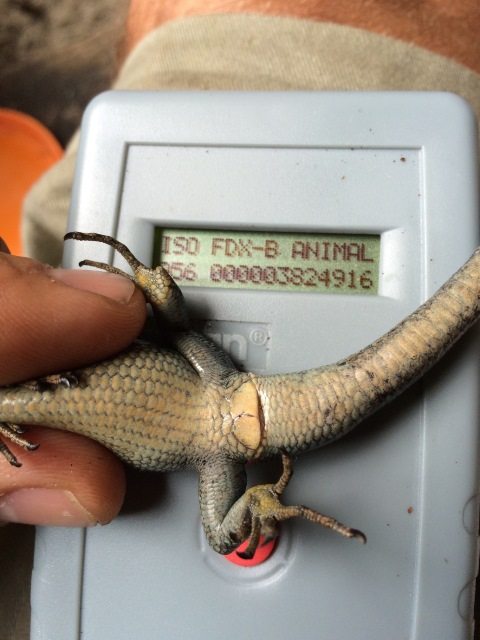
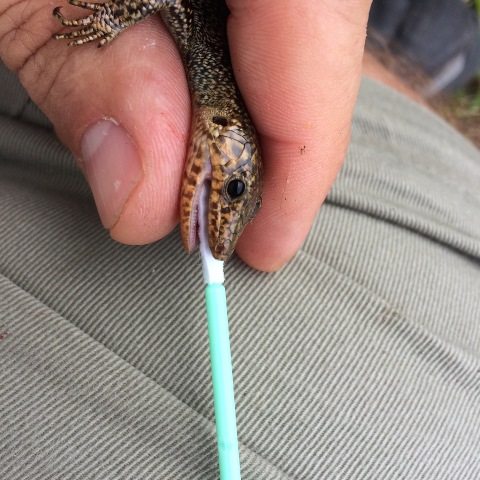
With all of these projects collecting vital information, it won’t be long before we have a more informed picture of the Bermuda skink population and better informed population management strategies can be put into place.
Gerardo will be providing us with a personal update from his trip shortly and with another expedition planned towards the end of 2015, there will be plenty of news for us to report on so watch this space!
We’ve not had an update from the Lowland Tapir Conservation Initiative for a while, so it’s great to receive not one, not two, but three updates from Patricia Medici, our tapir conservationist.
“Here I am for another update from the field and I am expecting this to be a long one! We have carried out THREE field expeditions since my last update (on World Tapir Day) and there is SO MUCH I would like to share with all of you.
“I will provide updates from all three expeditions separately:
Cerrado, June
“As mentioned in previous updates, the selected study area for the Lowland Tapir Conservation Initiative (LTCI) Cerrado Tapir Program is a landscape located along a highway in between Nova Alvorada do Sul and Casa Verde, Mato Grosso do Sul State, Brazil.
“The idea is to have a continuum of studied/sampled areas. The study area is approximately 2,200km2 in size, including 12% of natural habitat (Cerrado fragments, gallery forests, and marshland).
“The LTCI Cerrado Tapir Program will evaluate the impact of threats on tapir populations; therefore, the study area includes several threats to tapirs including: road-kill, poaching, habitat destruction and fragmentation, agri-business (soy bean, sugar cane), eucalyptus plantations, forest fires, charcoal production, pollution of water bodies by pesticides etc.
“In addition, we selected THREE patches of Cerrado habitat within the study area for tapir captures and monitoring.
“The main objectives of the June expedition were:
“One – to search for tapir signs (footprints, faeces, foraging signs) and tapir sightings throughout the study area and select locations for the establishment of bait stations and future placement of traps.
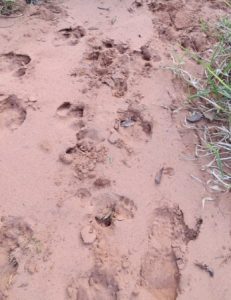
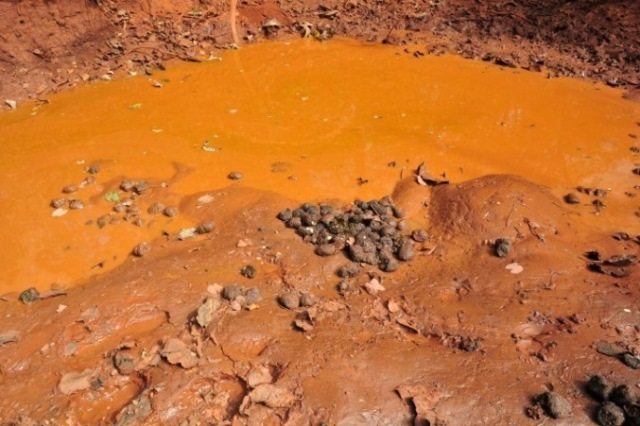
“Two – to make a decision about the most appropriate tapir capture methods for the Cerrado
“Three – to monitor the two highways crossing the study area for tapir road-kill (sampling for health and genetic studies)
“Four – to continue the process of establishing contacts/partnerships with local stakeholders including landowners, landless people, small farmers in Agrarian Reform settlements, urban and rural schools, community centres, local governmental agencies, local police stations, etc.
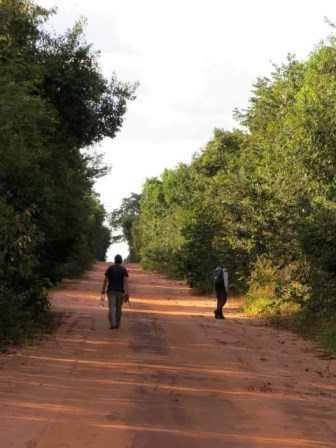
“The main results included:
1. The establishment of 15 bait stations (salt) in identified tapir paths;
2. We had our first tapir sighting in the Cerrado (a tapir that was actually alive and not dead by the highway), a sub-adult female calmly resting in an artificial water hole in the middle of the afternoon (!!!)
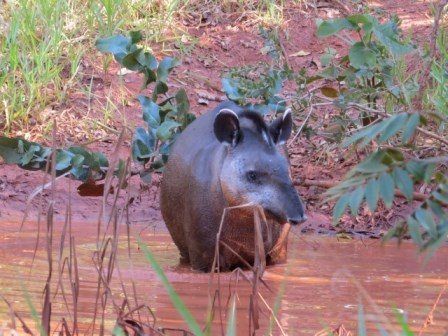
3. We decided that the most appropriate capture method in the Cerrado will be pitfall traps, with the occasional use of darting from a distance in specific situations. As there is A LOT of poaching in the Cerrado and we do not feel comfortable to build permanent box traps that can be used by poachers when we are not in the field. At least for now, we will use pitfall traps that can be used during capture expeditions and camouflaged before we leave. We have successfully captured 23 tapirs in pitfall traps in the Atlantic Forest and we are confident this method will be very successful in the Cerrado as well;
4. We recorded and sampled the staggering number of SIX tapirs hit by cars and killed in the highways…heart breaking;
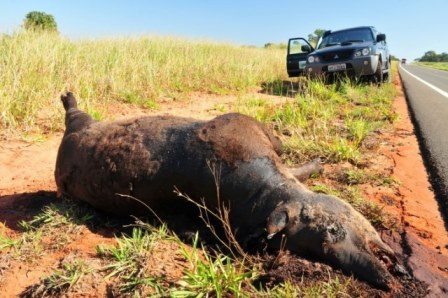
5. We collected tapir faecal samples for the study of faecal parasites, an important parameter of tapir health; and,
6. We visited and/or had meetings with a number of local stakeholders, including the main rural school that provides education to most children and teenagers living in the four landless settlements (580 families) in the region.
Read the next update from Patricia and the team, here.
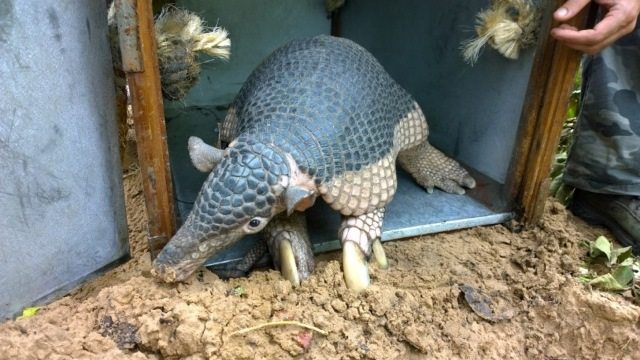
Dr Arnaud Desbiez tells us more:
“We have just returned from the field and I am afraid I have some very bad news to share: Alex-the armadillo we have been following since his birth almost two years ago-has died. He was mortally wounded by a predator most likely a puma and died inside one of his mother’s old burrows.”
Alex was quite a famous Armadillo – so much so this sad news was picked up by The Guardian.
“For the past two years the first thing we do when we get to the ranch is travel 40 minutes to the area where Alex was last seen. Once we locate his burrow we place a camera in front of it and then search for his mother. This was exactly the routine we followed for the June expedition.
“Once located-I was surprised to see that Alex had selected one of his mother’s old burrows and had not even thrown any fresh sand out on the sand mound. If Gabriel and I had not just spotted fresh tracks from him leading to the burrow I would have been very worried. Still-he had been making his own burrows now for over 5 months and I did find it odd. We located his mother about 900 metres away from him-which was nice.
“On the evening of the third day we set out to find Alex and Isabelle again. Isabelle was quickly located-but Alex ‘s transmitter indicated the same area he had been found in three days ago and as we walked the signal indicated the same burrows…strange-but not unheard of.
“We had placed a camera trap in front of the burrow and quickly checked the pictures. Alex had not left the burrow. What was most alarming was the camera trap showed a vulture landed in front of the burrow and seemed to be checking out the entrance…we had only observed this once before: in front of the burrow where Isabelle’s previous baby had been killed.
“My heart sank as I saw that picture. I went to smell the entrance of the burrow. I was devastated. I smelled a faint smell of rot instead of the sweet-strong acrid smell of a giant armadillo. I could not believe this was happening. I was in total shock.
“The sun was setting and we returned to the ranch in a somber mood. Few words were exchanged that night.
“The next morning we returned to the burrow and slowly-carefully opened it until we found Alex’s body. The first thing we noticed was the puncture between his shoulder blades. His armor was strong and in good condition but around the puncture wound the bone scales were rotten. We are guessing that Alex was attacked and wounded on the night he entered the burrow. He managed to escape the predator-but suffered a deep wound between the shoulder blades. The only animal that would have the strength to do this much damage in a giant armadillo is a puma.
“I cannot begin to express how upset we all are. Alex had taught us so much and we still had so much to learn from him. His life and interactions with his mother had been carefully documented. He showed us that parental care in giant armadillos was much longer than ever imagined. Pictures of him and his mother playing revealed a whole new side of giant armadillos.
“What an amazing ambassador for his species. Alex will be missed by the whole team.
“Through his death we realized once again how hard it is for these rare ancient creatures to survive. This is the second birth we have followed. Both ended tragically.
“These events highlight the importance of long term studies to help us understand and conserve these magnificent creatures. There is so much more we need to learn and we are very grateful for all the insights we have been able to make thanks to Alex. Sorry not to have better news to share-but this is all part of the journey. Better news in the next update.”
The field conservation team at Chester Zoo work with partners in many different environments all over the world; from the tropical rainforests of Borneo-to the temperate woodlands of the UK.
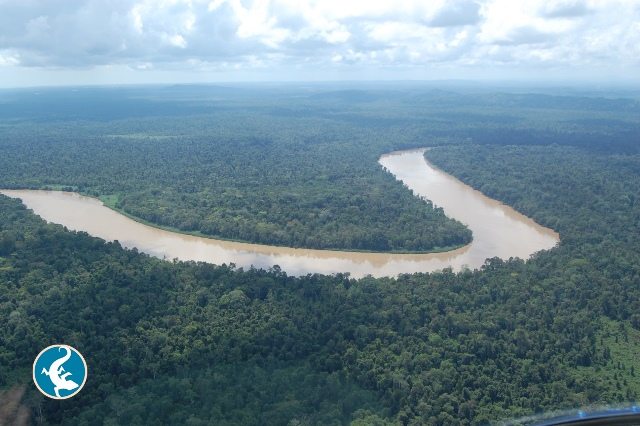
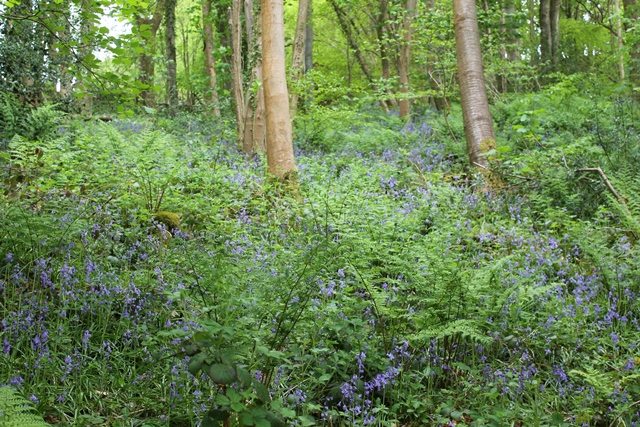
We work with those living in areas where conflict with their environment may become a problem and help them to adapt to live in harmony with the animals in the landscape that they are living in. Our Asian elephants programme-for example-through the Assam Haathi Project works to find solutions to the human-elephant conflict which occurs in the area.
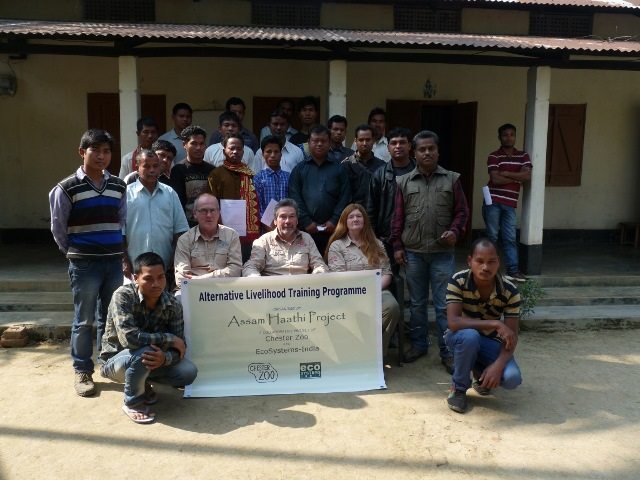
You can also get involved in making changes to your lifestyle that can have positive effects on the environment-not just in the country that we live in-but all over the world.
Palm oil is an issue which is becoming increasingly part of our everyday lives – it is a vegetable oil used in around 50% of our supermarket products and grown predominantly in South East Asia. Many companies now choose to use sustainable palm oil which has less impact on the environment and local people. By making wise choices with your shopping-you can choose to support sustainable palm oil production and help save the environment that animals-such as orangutans-live in.
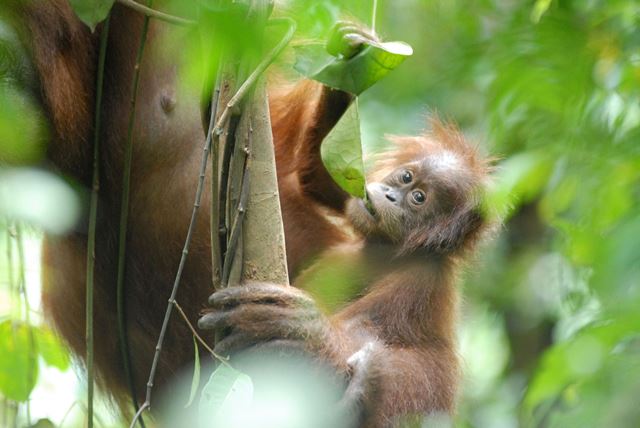
Lucy Edwards, lead keeper of the twilight team at Chester Zoo, has recently visited a conservation project in Peru that is working to protect the beautiful Andean bear – also known as the spectacled bear. Through Chester Zoo’s support, the Spectacled Bear Conservation Peru have been able to purchase vitally important camera traps to continue their research on wild spectacled bears. The project is based in the dry forest on the foothills of the Andes in northern Peru.
Lucy tells us more about her trip:
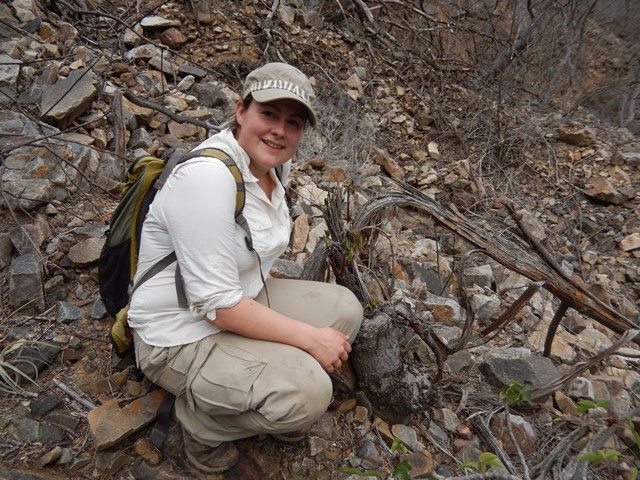
“I have worked at Chester Zoo for four years and have always wanted to work with bears so when I got the opportunity to work with the spectacled bears on twilight section I jumped at the chance. They are my favourite animal – they are so beautiful and unique, as even though they are classed as carnivores they almost completely herbivorous and their vocalisations, such as trilling and humming are wonderful.
“My favourite part of working with the bears is trying to come up with lots of different ways of providing environmental enrichment to keep them both mentally and physically stimulated. I was also very excited to receive our two new bears Bernardo and Lima last year as they will form a breeding pair as part of an international breeding programme in the near future.
“Spectacled bears are the least researched of all the eight species of bears so it is fantastic that the zoo is supporting the Spectacled Bear Conservation Peru project. I was able to go out to Peru and visit the project. The purpose of the trip being to see what work is being carried out and how the zoos support is helping.
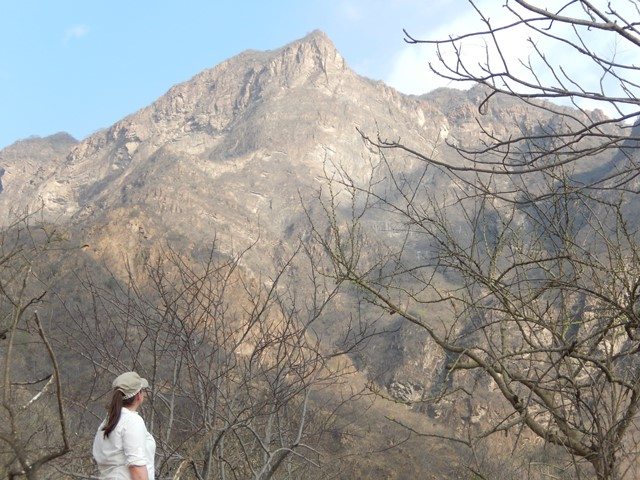
The thing I was most looking forward to on my trip was the chance of seeing a wild spectacled bear in its natural habitat but I knew there was only a very slim chance of seeing one as they are incredibly elusive and notoriously difficult to find.
“The following day after hiking for 3 hours ½ hours up a mountain in 35°C Javier, Jose (2 of the researchers) and I reached a water hole. We settled down and got comfortable, well as comfortable as possible on a floor of rocks, in a hide above the water hole.
“Approximately 10 minutes after we arrived we heard the echoing sound of rocks falling high up on the mountain. The bears were awake! Shortly after this, far in the distance a tiny black spec was visible on the opposite mountain moving down a trail. I reached for my binoculars to discover it was a bear on its way to the water hole.
“Excited does not even come close to how I was feeling but I remained completely still and quiet and waited patiently hoping that the bear would approach. About 10 minutes later Javier whispered ‘Oso’, which means bear in Spanish. Through the many trees I could see a black shape approaching and to my complete surprise a two year old female cub walked right in front of us looking at all three of us as she passed by and without a care she began to drink. I was terrified of making any noise!
“A second, slightly larger bear approached the water hole but only stayed momentarily. Just as my second sighting was beginning to sink in a third bear, the mother of the two year old cub climbed up the rocky terrain towards us. She sniffed around and watched us for a few seconds then casually carried on past us. She had beautiful spectacle markings (the feature which gives this species its name). I couldn’t believe I had already seen three wild bears and it was only 6.30am on my first day in the field. The sun wasn’t even up yet! Suddenly the difficult hike up the mountain was all worth it.
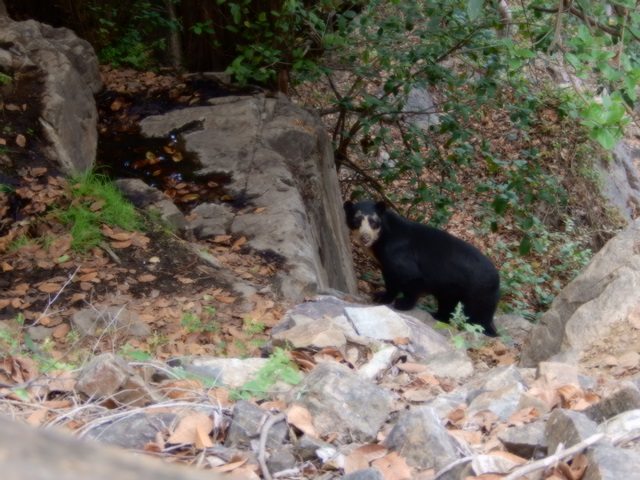
Bears always follow the same trails; it’s how they find their way around. We have noticed our bears at the zoo like to do the same. Once the camera was fitted we needed to test which basically involved crawling down the trail on our hands and knees and seeing if the camera was activated.
“After walking back down the mountain to the camp we decided to check the other side of the mountain for any bear activity. This time we stayed in the valley at the bottom and searched the cliffs for black specs. After my good luck in the morning I didn’t expect to see much more but amazingly after a short while there was a bear, a large male walking along the cliff at some pace. Just above him another bear! The male was pursuing a female (mating season occurs at different times of the year in the southern hemisphere, here at the zoo the bears often mate in May/June). I peered through my binoculars to see the bear’s courtship behaviour (neck biting and pawing each other) then they mated. Only in this area of Northern Peru can spectacled bear behaviour be witnessed first-hand like this due to the open terrain and arid environment. Seeing mating behaviour is a very rare site even for the researchers so I was incredibly grateful to be able to be there at that time.
“I settled down for my first night in the field and aside from the scorpions and all the bugs it was quite comfortable.
“The following day we walked to the other side of the mountain again but this time crossed the valley and climbed a short way up the opposite mountain where we could look for bears. Before we had even reached our destination Javier whispered ‘Oso’ again – my new favourite word. We sat on some rocks and watched through our binoculars as the male from last night was still pursuing the female. This time however the female was accompanied by her 2 year old cub. As the male closed in, the cub retreated to a nearby cave and the pair came together.
“During the hottest part of the day all we could do was sleep but I’m always up for a nap so that was fine by me.
“Later that afternoon two small bears could be seen low down on the mountain feeding on sapote fruit. Sapote fruit is vitally important to spectacled bears in this area as it enables them to put on enough weight to survive the rest of the year when there is very little food available. This was thought to be the female cub and her sibling. That brought my total bear siting count up to five but that was the end of my luck as they were the last bears I saw.
“After five days in the field we returned to the conservation centre in Batan Grande. Here I met the local women who make hand felted products to raise money for the project. I got the chance to make my own spectacled bear which I modelled on Franka (one of our bears at Chester Zoo). Admittedly it was not quite the standard they were used to but it made a nice souvenir.
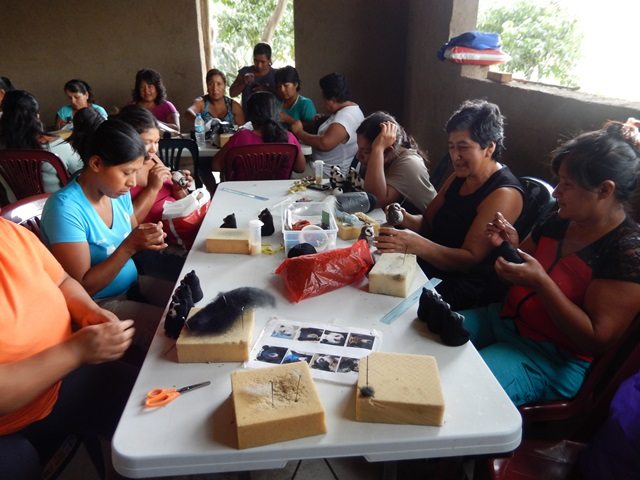
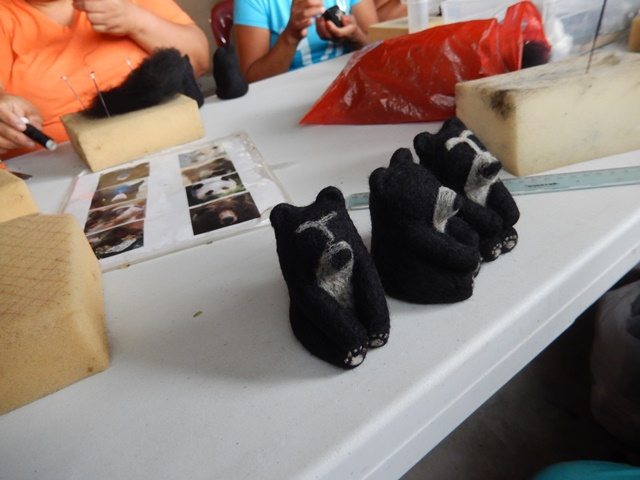
“The rest of my trip was spent visiting some of the other areas where the researchers observe the bears and the area the project is hoping to expand the research into. This area was beautiful as all the trees and cliffs were covered in bromeliads. It reminded me of Paradise falls from the Pixar film ‘Up’.
“Whilst seeing the bears in their natural habitat in Peru I realised just how adaptable this species must be to survive. It also inspired me to try out some more enrichment ideas to challenge our bears at the zoo.”
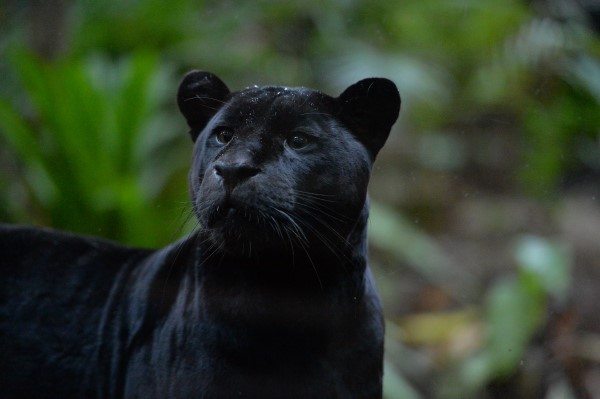
Donate now and 100% of your money will be used to help save wildlife in Latin America.
Who’d have thought something so small would stop something so big?
“2014 was been a big year for the ‘Elephants and Bees’ project in Sri Lanka. I spent six months in Sri Lanka busy building relationships with the farmers of Dewagiriya village; the village chosen for the first formal beehive fence trial in Asia.
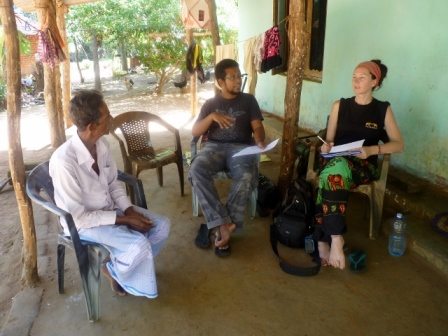
“I’ve had the opportunity to learn invaluable elephant identification and data collection skills from renowned elephant researchers and conservationists Dr. Prithiviraj Fernando and Dr. Jenny Pastorini. I’ve also received valuable beekeeping advice from Sri Lankan expert Dr. Wasantha Punchihewa. Our beehive fence trial is progressing solidly and should in months to come make a real difference to the lives of the farmers we work with.
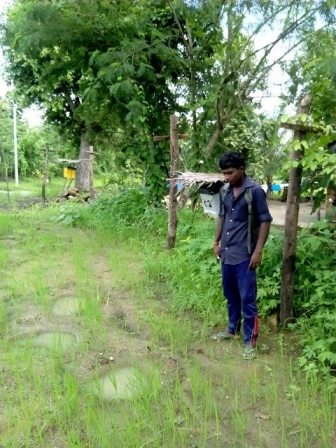
“Our first big achievement was the completion of social research interviews with 27 households in Dewagiriya Village. With the assistance of my translator Supun Wellappuliarachchi and my local field assistant Supun Herath-we met as many families as possible to learn about the crop raiding behaviour and patterns of elephants frequenting the village-their perceptions of living alongside elephants-and their thoughts on the potential of beehives as an elephant deterrent.
“Farmers spoke of spending months at a time staying awake at nights to guard their fields from elephants-of never being able to go anywhere as a family as the house also has to be constantly guarded-and of waking during the night to the sounds of an elephant breaking through the kitchen wall to steal rice and salt. Nonetheless most people retain some respect for these giants and want to see a future for elephants-though not necessarily in their own backyards. People are doubtful that an elephant will be scared by bees but are keen to try the idea and excited by the prospect of generating extra income through honey sales. All farmers have been provided with data sheets to log elephant sightings-crop raiding attempts and extent of any damage caused.
“The interviews enabled us to get a feeling for which areas of the village are most at threat from human-elephant conflict and who has a genuine interest in participating in the trial. From information garnered through these interviews and further surveys of the village and individual farms-I selected the first households for participation in the trial-focusing on protection of homes and gardens-and thus aiming to keep families safe at night while the men are guarding the paddy fields.
“As preparation for the coming paddy season commenced-coinciding with the time of year that crop raiding once again begins to peak-we worked with farmers to build the first beehive fences. It took many hours and days of preparing beehives-digging holes for posts-hammering and nailing-ferrying posts around farms-making coconut leaf roofs to shade the beehives and hanging hives. We were proud to have the first four beehive fences complete.
“As the monsoon began-I went home to work on the logistics and planning for 2015. We are ready to hit the ground running in February-building another four beehives and completing the first stage of the trial-begin beekeeping workshops with the farmers and introduce colonies to the hives.
“We will also progress from the project set up to collect the scientific data of crop raiding behaviour in Dewagiriya Village-nearby water tanks and in Wasgamuwa National park. This data collection will provide us with information on elephant movement patterns-social behaviour and temperament-and enable us to strengthen the beehive fence design specific for the Sri Lankan crop raiding situation.
“Enthusiasm from the farmers is building and the families are very impressed with their beehive fences. Our first beehive fence farmer hopes to continue his leadership by being the first farmer to attract bees to his hives. Not long ago-two elephants visited one of the homes in the village – their footprints clearly visible on the outskirts of the fence. Without bee occupations-elephants will quickly learn the fence represents no threat to them but their initial avoidance is encouraging-and also increases the farmer’s interest in the beehive fence technique throughout the village.
“I extend a huge thank you to Chester Zoo-the Rufford Small Grants for Nature Foundation-and Elephant Action League for their financial support-without which this project would not be possible. Sincerest thanks also go to collaborating partners The Sri Lanka Wildlife Conservation Society-Save the Elephants and Professor M. Wijayagunawardane (University of Peradeniya) for all of their valuable input and assistance.”
The southern woolly lemur (Avahi meridionalis) is endemic to the island of Madagascar. There is little known about this endangered species and so any studies around this animal and its habitat are important for the design of effective conservation measures.
Kathryn Scobie-one of the applicants of our 2014 Studentship Grants scheme spent 3 months in Sainte Luce in Madagascar working on a project around the southern woolly lemur and its habitat use and sleeping areas.
“Dusk was just beginning to fall. It was already our third day of searching but light was fading quickly and soon we would need to cut our losses-and head back to camp.
‘Misy!’ There!
Babaly-our local guide-had seen something overhead in the trees.
‘Mora mora…’ Slowly…
It could be a false alarm. Maybe it’s a brown lemur-or a bird. Maybe it’s nothing.
‘Fotsife!’ Woolly! Babaly pointed.
‘Telo!’ Three!
“We were 1 week into our 3 month stay in Sainte Luce-a rural village at the south eastern tip of Madagascar. Days were spent searching the surrounding littoral forests for sleeping sites of the nocturnal woolly lemur-more often crossing paths with a rambunctious troop of red-collared brown lemurs or mistaking the rustling of a paradise fly-catcher for that of our ever-elusive mark. After nightfall we would meander the forest paths-ducking beneath spiders’ webs and stumbling across the undergrowth; all the while scanning the tree-tops in the hope of catching the red glow of two eyes reflecting the light of our torches.
“On this occasion we were hoping to find a group just before nightfall-to observe them as they awoke and hopefully catch an insight into the behaviour of this secretive species. We were in luck. With only minutes of daylight left we found ourselves amongst the palms of a dried-out swamp-metres from a family of woollies. So we sat-and waited-and watched. A passing troop of brown lemurs momentarily disrupted the calm. Crashing through the trees-talking to each other with pig-like grunts-you hear them before you see them. But they weren’t interested in anything here-the woollies ignored them and they disappeared as quickly as they had arrived.
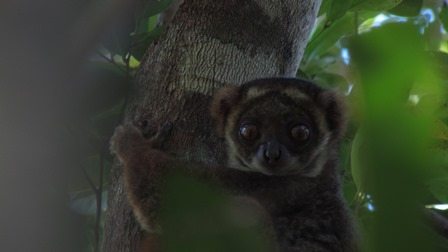
“We were sitting again amongst the quiet whirr of forest-flecked with the trill of a frog-or the ‘churrr’of a nightjar. As the last of the daylight faded-right on cue-one by one they darted. The four of us scattered-trying to keep up with the woollies-but they’d lost us.
“The southern woolly lemur (Avahi meridionalis) is threatened by the continuing decline in the area and quality of habitat within its range. The littoral forests of southeast Madagascar are severely fragmented and have been heavily impacted by human activity.
“Reclassified in 2012 from Data Deficient (DD) to Endangered (E)-the southern woolly lemur is little-studied and so information about habitat requirements and key resources such as sleeping sites are important for the design of effective conservation measures.
“The support from Chester Zoo contributed to all aspects of this project-the primary focus of which is to identify how populations of this species cope with habitat disturbance and deforestation. The Studentship Grant allowed us to purchase vital research equipment-it meant that we could hire and train local guides-and took us by air-by road and via mangrove swamp to our study sites in some of the most remote areas of rural Madagascar.
“The fieldwork phase of this project is now complete and it’s time to look at the results. From these it is hoped that we will be closer to understanding the ecology of the southern woolly lemur-so that future conservation measures can effectively target this species. Madagascar’s rainforests are growing smaller-and for now this trend does not look set to change. However-with support from organisations such as Chester Zoo-and with initiatives such as Act for Wildlife-we can ensure that the pressing need for progress is met and that we continue to make advances in the measures used in conserving Madagascar’s unique ecosystems and the fauna and flora which make them so special.”
Learn more about our Studentship Grants scheme, here. If you are interested in applying for funding to support your project the deadline for applications is Friday 13 February 2015.
Our Gashaka Biodiversity Project works to protect not only a beautiful wilderness and all of the ecological functions it plays, but biodiverse habitats that hold a wealth of threatened species – including the Nigeria-Cameroon chimpanzee.
This species is registered as endangered by the International Union for the Conservation of Nature’s (IUCN) Red List of Threatened Species.
In the below video Dr Umar Buba, project manager of our Gashaka Biodiversity Project, tells us more about these animals and why they are under threat of extinction.
